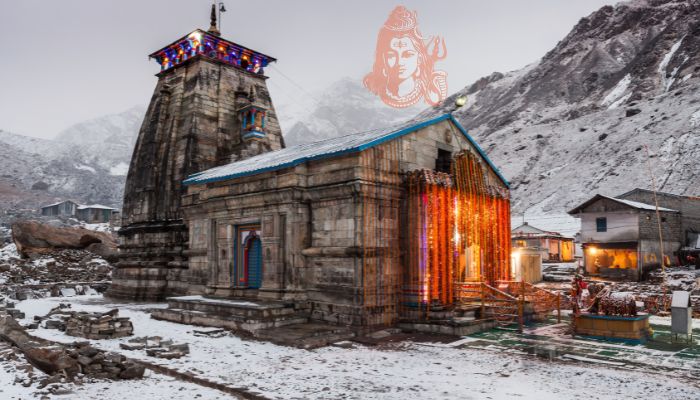How to Go to Kedarnath: A Complete Travel Guide for Pilgrims and Adventurers
If you’re planning a trip to Kedarnath, you’re in for a journey that’s both spiritual and scenic. Kedarnath is one of the most revered temples in India, located high up in the Himalayas, offering a breathtaking view of snow-clad peaks. Pilgrims and trekkers alike visit the area, not just for its religious significance but also for the majestic landscape that surrounds the journey.
In this blog, we’ll cover everything you need to know: from the Kedarnath Temple, Kedarnath weather, helicopter booking details, the best routes, and distances from key locations like Haridwar, Delhi, and Badrinath. So, let’s dive right in!
About Kedarnath Temple
The Kedarnath Temple is one of the most important shrines in Hinduism. It is one of the twelve Jyotirlingas dedicated to Lord Shiva and forms part of the famous Char Dham Yatra of Uttarakhand. Perched at an altitude of 3,583 meters (around 11,755 feet) above sea level, it is surrounded by the beautiful Garhwal Himalayas. The temple’s history is believed to date back to the Mahabharata era, with legends stating that it was built by the Pandavas.
The architecture of the temple is awe-inspiring, featuring large grey stone slabs that have stood the test of time—even surviving a major flood in 2013. Pilgrims from all over the world visit Kedarnath to experience the peace and spirituality that the temple offers, which is amplified by the breathtaking views of the Kedar Dome and other towering peaks.
Where is Kedarnath Temple Located?
The Kedarnath Temple is located in the Rudraprayag district of the Indian state of Uttarakhand. It sits on the banks of the Mandakini River, surrounded by lush valleys and towering snow-capped mountains. The nearest town is Gaurikund, from where the journey to Kedarnath starts.
How to Reach Kedarnath
Getting to Kedarnath is not just about transportation; it’s a spiritual trek, offering you the chance to connect with nature and the divine. Here’s how you can get to Kedarnath:
1. By Road: Reaching Gaurikund
- The journey to Kedarnath typically starts by road, with Gaurikund as the final motorable point.
- Delhi to Kedarnath Distance: The distance from Delhi to Kedarnath is approximately 450 km. You can drive to Haridwar or Rishikesh, then continue to Gaurikund.
- Haridwar to Kedarnath Distance: The distance between Haridwar and Kedarnath is about 240 km. From Haridwar, you can take a shared taxi or bus to reach Gaurikund.
- There are direct buses and taxis from Haridwar, Rishikesh, and Dehradun to Sonprayag, which is close to Gaurikund. From Sonprayag, you can take a local shuttle to reach Gaurikund.
2. Trekking from Gaurikund
- From Gaurikund, you need to trek approximately 16 km to reach Kedarnath. The trek is moderately difficult but well-marked, and you will find plenty of small eateries and resting places along the way.
- For those who are not comfortable trekking, pony services and palanquins (palkis) are available for hire.
3. Kedarnath Helicopter Booking
If trekking isn’t feasible for you, you can opt for a helicopter ride. Helicopter services operate between several points, such as Phata, Guptkashi, and Sersi, to Kedarnath.
- Kedarnath Helicopter Booking: You can book helicopter services online through authorized websites like Heritage Aviation, Pawan Hans, and others. It is advisable to book well in advance during the peak season.
- The chopper ride takes approximately 8-10 minutes from the helipad at Phata to Kedarnath, making it a convenient option for elderly pilgrims or those short on time.
Kedarnath Temperature and Weather Conditions
Understanding the Kedarnath weather is crucial for a safe and enjoyable trip. Here’s what you need to know:
- Summer (May to June): The best time to visit Kedarnath is during summer. The temperature ranges from 5°C to 17°C, which is perfect for trekking. The temple opens in early May, and the weather is pleasant for visiting.
- Monsoon (July to September): The monsoon season brings heavy rainfall, which often leads to landslides, making travel unsafe. It’s not recommended to visit Kedarnath during this period due to the risk of natural calamities.
- Autumn (September to October): This is also an ideal time to visit Kedarnath. The weather remains clear, with temperatures between 0°C and 15°C, offering crisp air and stunning views.
- Winter (November to April): The temple is closed due to heavy snowfall, and the idol of Lord Shiva is moved to the Omkareshwar Temple in Ukhimath. Temperatures can dip well below -10°C, and the region remains covered in snow.
Accommodation at Kedarnath
Accommodation in Kedarnath ranges from budget guesthouses to basic lodges. The GMVN (Garhwal Mandal Vikas Nigam) guesthouses provide decent lodging options for pilgrims. Since accommodation is limited, especially during peak pilgrimage season, it’s best to book in advance.
Distance from Kedarnath to Badrinath
If you’re planning to visit Badrinath after Kedarnath, the distance between the two holy shrines is approximately 40 km as the crow flies, but the driving distance is about 218 km via road. The road trip can take between 7-8 hours, depending on road conditions. Most pilgrims prefer to visit both Kedarnath and Badrinath as part of their Char Dham Yatra.
Tips for Visiting Kedarnath
- Physical Fitness: The trek to Kedarnath is steep and requires a reasonable level of physical fitness. It’s advisable to start light exercises or practice walking several weeks before the journey.
- Start Early: If you’re trekking, start early in the morning to avoid the strong afternoon sun and reach the temple in time for darshan.
- Stay Hydrated and Pack Light: Carry enough water and a small backpack with essentials like snacks, a raincoat, extra layers, and first aid.
- Proper Attire: The temperature can drop suddenly, especially in the evening. Carry warm clothes, even during summer, and wear comfortable trekking shoes.
- Book Helicopter in Advance: For those interested in helicopter services, booking in advance is a must, especially during peak season. The slots fill up fast, and same-day availability can be unpredictable.
- Altitude Sickness: Since Kedarnath is situated at a high altitude, you might experience mild symptoms of altitude sickness. Rest and hydrate properly, and consider carrying medication for AMS (Acute Mountain Sickness).
Conclusion
A journey to Kedarnath is an experience like no other—a blend of spirituality, adventure, and stunning natural beauty. Whether you choose to trek up the hills, ride a pony, or take a Kedarnath chopper, the experience is deeply rewarding and memorable.
The majestic views of the Himalayas, the soothing sound of the Mandakini River, and the spiritual aura of the Kedarnath Temple make the effort of reaching there worthwhile. Remember to prepare well, check the weather conditions, and stay safe during your travels. Whether you’re making the journey for spiritual fulfillment or for the love of adventure, Kedarnath has something truly special to offer every visitor.














Post Comment